Future Motion is known for the iconic Onewheel which has carved out its own niche within the electric skateboard community. This distinct one wheel arrangement places Onewheels into a category of their own. One of the many perks of a Onewheel is that they do not operate with a remote control as do many e-skateboards do. They use a weight-sensing mechanism within the sensor to detect a rider. Is Future Motion planning on using this same weight-sensing technology for four-wheel skateboards?
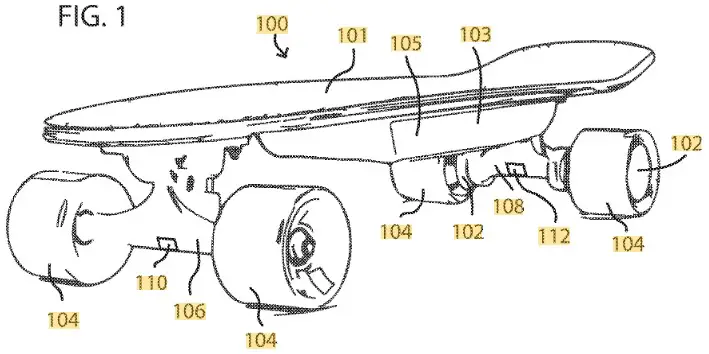
On 06/22/2021 a patent application (US11484775B2) was submitted by Future Motion for ‘Electric skateboard with strain-based controls and methods’. The abstract of the patent outlines a weight sensing mechanism that operates a traditional e-skateboard without any remote control.
The abstract reads: “An electric weight sensing skateboard using one or more strain gauge systems to detect rider-induced strain on one or both trucks, an inertial sensor to detect accelerations and balance position, and wheel speed sensors. Throttle is controlled by rider position, for example, lean forward to increase speed, lean back to slow down. Several drive methods include a driver position detection velocity setpoint control, torque setpoint control, and direct velocity/torque control. A throttle remote is note required. Rider weight activates the motors.”
The diagrams within the abstract show an electric skateboard that appears to be relatively similar to boards out. The platform and layout are similar, battery is located still under the deck and there will be two sets of motors. The main difference appears to be within the trucks and the lack of a remote. Future Motion is not the first company to come up with a remoteless eboard however their take on it is unique.
Will an Electric Skateboard Work Without a Remote?
If Future Motion’s patent, it appears that they are taking the remote-free / sensor concept of the Onewheel and creating a sensor that functions with the two trucks of a skateboard. The patent outlines the following:
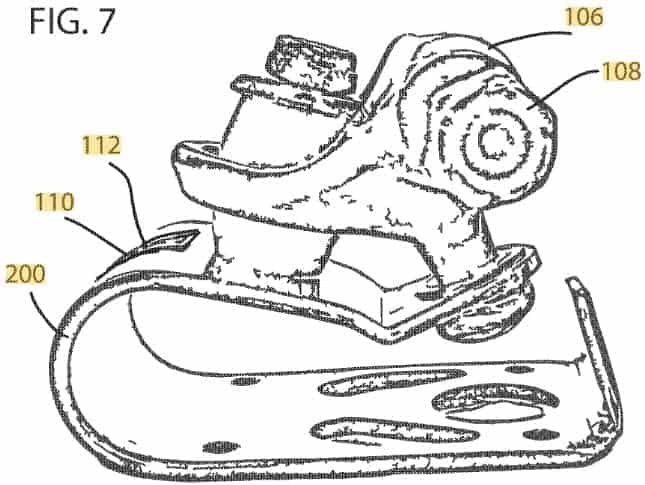
- A platform designed to support a rider.
- A drive motor that powers one or more wheels in contact with the ground, which are attached to the platform.
- Two strain gauges, one located in the front portion and the other in the rear portion of the platform. They are configured to detect the strain exerted on each portion of the platform.
- A controller that performs two functions. Firstly, it calculates the rider’s weight and center of gravity by analyzing the strain data detected by the strain gauges. Secondly, it controls the speed of the drive motor using a proportional-integral-derivative (PID) loop that increments or decrements a setpoint in response to the center of gravity. The aggressiveness of the PID loop depends on the rider’s weight.
It appears that Future Motion is making skateboard trucks that look like leaf springs of a pickup-truck in which sense weight. There is a sensor on the “leaf spring” that communicates with the other truck to calculate the center of gravity (CG). This would essentially mean that the rider would have to lean in similar fashion to a Onewheel (forward and backward) to slow or accelerate the board.
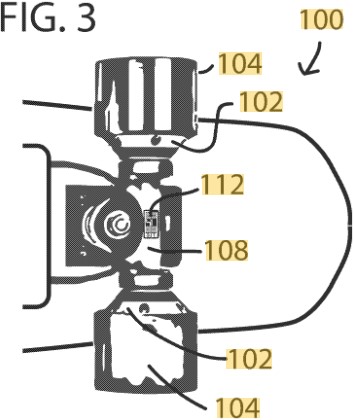
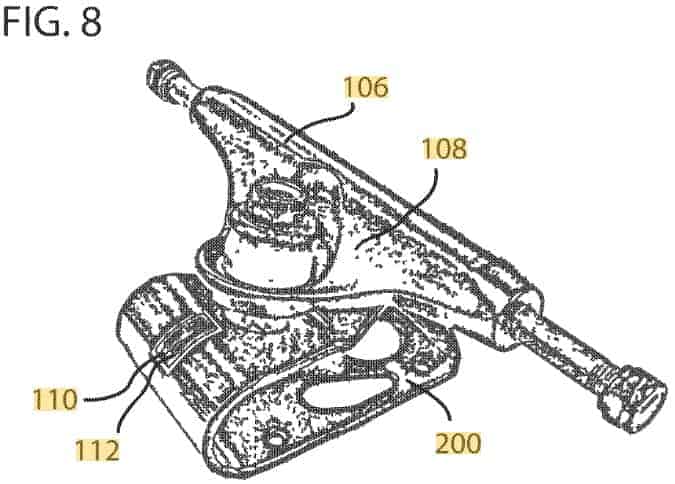
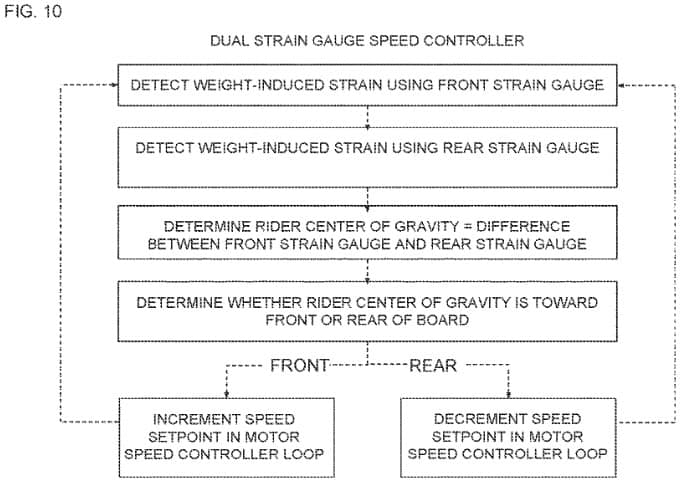
Rider Profiles and Digital Shaping
Within the patent, it states “In some examples, vehicle 100 may save in memory the desired settings of each individual rider, e.g., according to his or her measured weight, and/or may recall a previously established profile (e.g., through a wireless connection to a smartphone). Such a profile may include information regarding throttle aggressiveness, maximum speed, and/or the like.”.
This sounds like Future Motion will have an app that learns from the rider as well as stores a profile. Likely they will offer presets and possibly custom shaping for these boards as well.
Riding This new Four-wheeled Future Motion Board
What will it look like to ride a four-wheeled electric skateboard where you lean forward to accelerate and lean back to slow down? Will the motors be chain or belt driven or even hubless? Is there going to be a “pushback”? As of November 1, 2022, all we know is that their patent application was granted. It’s likely that the Research and Development team at Future Motion is planning all of this out as we speak.
I personally do not think this board will resemble a Onewheel in ride feel. You wont get that float effect. While there is no way to push back on the rider, likely Future Motion will employ some sort of speed governor or the motors will just max out. Its going to be interesting to see if this ever makes it to market.
Conclusion
Could it be that Future Motion is just patent squatting and really has no intention of developing this concept? To me, it definitely appears that Future Motion is working on getting this weight sensing technology into their own version of an electric skateboard. If this weight sensing technology works with e-skateboards, this will be somewhat of a gamechanger. Can these boards operate without a remote and still be as great and reliable as traditional e-skateboards? Hopefully. Time will tell. In any event, Future Motion is living up to their name as they are still pioneering the motion of the future.
